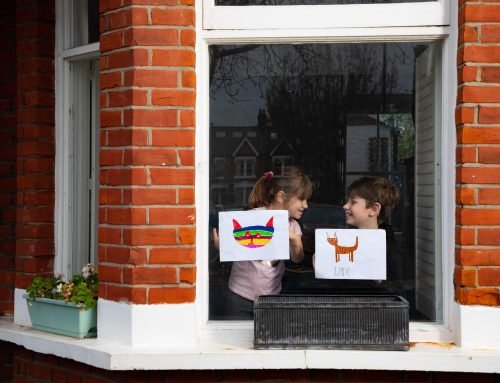With the reopening of major institutions like the Royal Academy (RA) of Arts, Tate and the Imperial War Museum, London’s art scene has truly moved from creative famine to artistic feast in just a matter of weeks. With the opening of two new exhibitions at the RA this week – Léon Spilliaert and Gauguin and the Impressionists – the options available to us grow richer by the moment.
After closing for almost four months due to the coronavirus (COVID-19) pandemic, the Royal Academy announced in June that they would reopen to RA friends on 9th July, before opening to the public on 16th July 2020. The reopening was scheduled to take place in stages, with additional health and safety measures including social distancing, compulsory face covering, sanitisation stations, a cashless system and one-way routes.
Secretary and Chief Executive of the Royal Academy of Arts, Axel Rüger, released a statement saying that “Galleries should be places of community – providing solace, inspiration and enjoyment – and we are pleased to be able to offer this once more… as visitor capacity will be greatly reduced due to social distancing, it will be an opportunity for a quieter, more contemplative experience in the galleries.”
Léon Spilliaert at the Royal Academy of Arts London from 23rd February 25th May 2020. Photo © David Parry - Royal Academy of Arts.
Rescheduled from its original February – March run, the RA is now preparing to open an exhibition of visionary work from Belgian artist Léon Spilliaert (1881–1946), set to run from 5th August until 20th September, 2020. This will be the first major UK exhibition of Spilliaert’s work and will bring together around 80 works drawn from public and private collections across Belgium, France, Great Britain and the USA.
Leon Spilliaert, ‘The Shipwrecked’, 1926. Watercolour, gouache, Indian ink and pen on paper, 54.2 x 75.3 cm. Private collection. Photo: Luc Schrobiltgen.
Spilliaert’s work is created from combinations of Indian ink wash, Conté crayon, watercolour, gouache, pastel, chalk, pencil and pen on paper or cardboard, often resulting in a highly atmospheric piece imbued with melancholy and mystery. Much of Spilliaert’s work captures empty beaches and towns at night, though this collection also features a range of visionary self-portraits which have seen Spilliaert’s work compared with other Nordic artists like Edvard Munch, Vilhelm Hammershøi and Helene Schjerfbeck.
This exhibition will show Spilliaert’s work arranged into four separate themes, the result of which is an insightful journey through the life of this unique artist. Section one, Illumination, will focus on the artist’s engagement with poetry, literature, theatre and book illustration. Crepuscle, the second section, will feature still-lifes and interior scenes that explore Spilliaert’s expressions of loneliness and emptiness in his twilit, insomniac world.
Léon Spilliaert, ‘Self-portrait’, 1907. Gouache, watercolour and coloured pencil on paper, 52.7 x 37.8 cm. Metropolitan Museum of Art © 2019. Image copyright The Metropolitan Museum of Art/Art Resource/Scala, Florence.
Moving into the second half of the exhibition, section three, Littoral, will look at Spilliaert’s depictions of Ostend’s streets, beach and promenade, the liminal areas between land and sea. Reflections, the final section, shows an important group of self-portraits.
Those interested in visiting the exhibition can book tickets via the Royal Academy website.
Alfred Sisley, ‘Unloading Barges at Billancourt’, 1877. Oil on canvas, 50 x 65 cm. © Ordrupgaard, Copenhagen. Photo: Anders Sune Berg. Exhibition organised by Ordrupgaard, Copenhagen and the Royal Academy of Arts.
Hot on the heels of the Royal Academy’s Léon Siplliaert exhibition, a second exhibition entitled Gauguin and the Impressionists: Masterpieces from the Ordrupgaard Collection is set to run from 7th August until 18th October 2020, rescheduled from its original March – June run. This exhibition showcases 60 works from Denmark’s Ordrupgaard Collection, a treasure trove of important Impressionist works. Many of the works by major painters such as Manet, Monet, Renoir, Pissarro, Morisot, Degas and Gauguin have never been seen in the UK.
This collection was assembled in the first decades of the twentieth century by wealthy Danish couple Wilhelm and Henny Hanson, and features masterpieces by many important Impressionist painters alongside precursors of Impressionism such as Charles-François Daubigny, Camille Corot and Gustave Courbet, as well as Post-Impressionist works by artists like Matisse, Gaugin and Cézanne.
Claude Monet, ‘Waterloo Bridge, Overcast’, 1903. Oil on canvas, 65.5 x 100.5 cm
© Ordrupgaard, Copenhagen. Photo: Anders Sune Berg. Exhibition organised by Ordrupgaard, Copenhagen and the Royal Academy of Arts.
The exhibition will be divided into a number of sections: Painting en Plein Air will feature landscapes, seascapes and cityscapes and illustrate the breaking away of Impressionists from the more classical Italianate landscape; Collecting French Masters displays the work of some of Impressionism’s key predecessors including Courbet, Jean-Auguste-Dominique Ingres and Eugène Delacroix; Impressionist Women will feature portraits of women by both male and female Impressionist painters; and Gauguin and Post-Impressionism will show work by the artists who reacted against Impressionism at the turn of the century.
Tickets for this exhibition have already sold out, but the Royal Academy will release more tickets this month. Those interested in attending are advised to sign up to the RA email list to be notified when tickets become available.
Gustave Courbet, ‘The Ruse, Roe Deer Hunting Episode (Franche-Comté)’, 1866. Oil on canvas, 97 x 130 cm. © Ordrupgaard, Copenhagen. Photo: Anders Sune Berg. Exhibition organised by Ordrupgaard, Copenhagen and the Royal Academy of Arts.






Leave A Comment